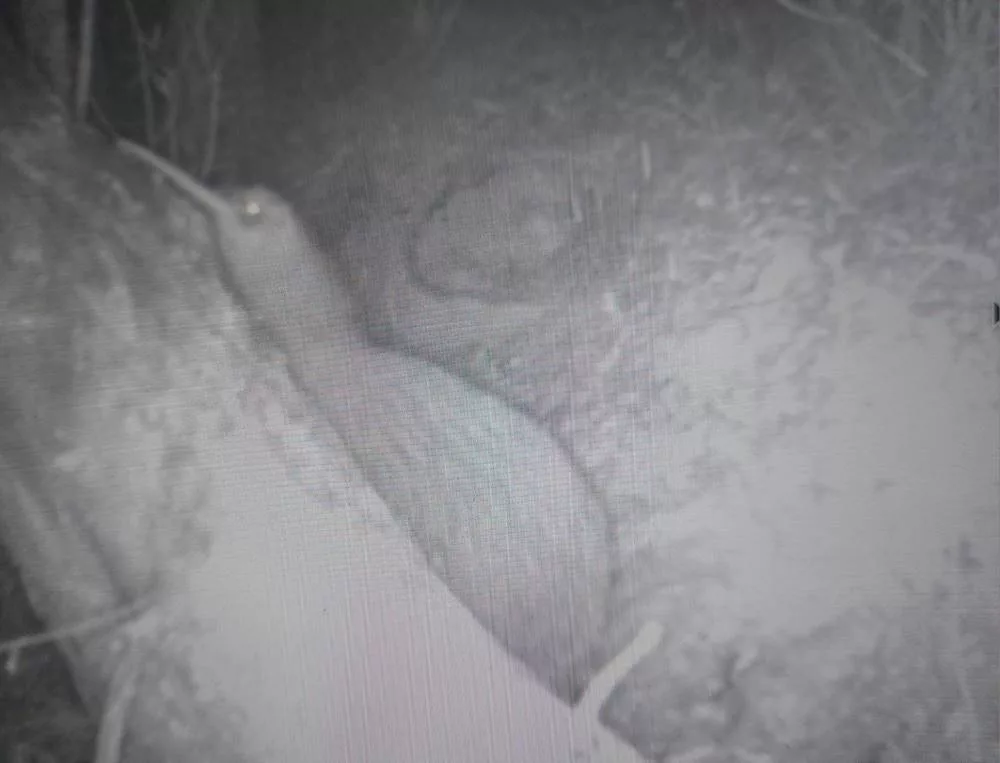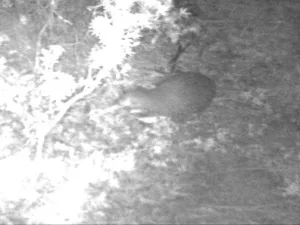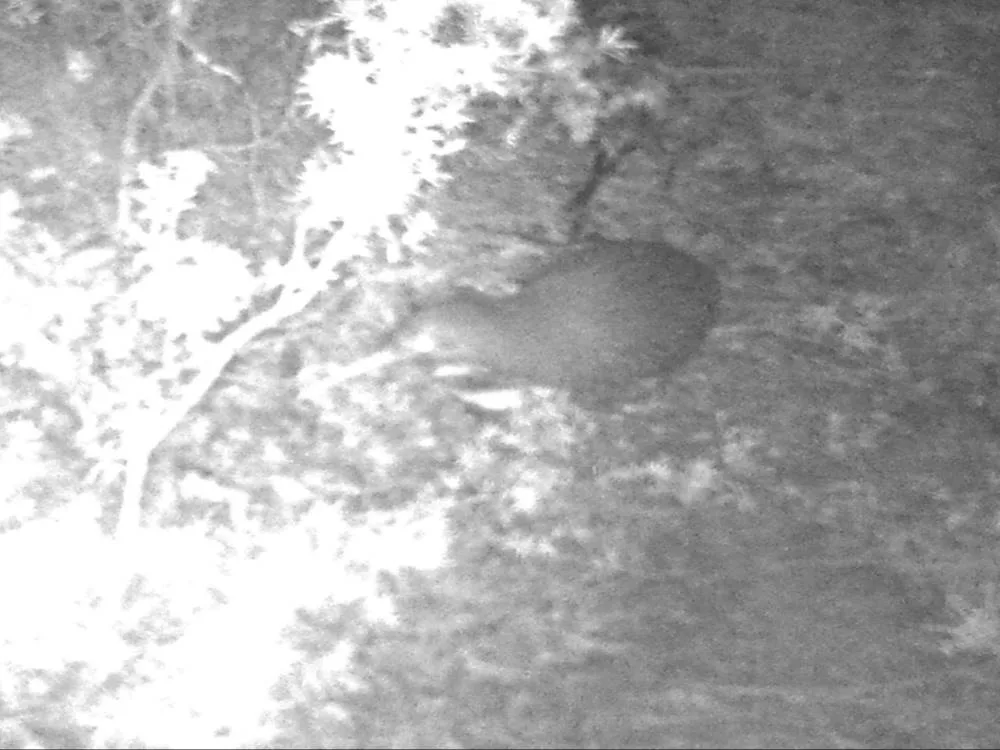The hard work and dedication of Driving Creek’s Conservation Team is producing great results for our beautiful native forest and wildlife. We now have evidence of a thriving kiwi population in the forest that surrounds Driving Creek and overlooks Coromandel Town.
Our Conservation Team has been trapping pest animals and expanding traplines to target mustelids, possums and rats since 2019; working to protect forest on surrounding Public Conservation Land as well as our own property. The conservation department seeks to create a safe habitat for the Coromandel Brown kiwi and other native species.
Our Conservation Team uses various methods to gage kiwi numbers in our area, including a trail camera network. The cameras are triggered by movement and capture images of kiwi or other animals that pass through key points in the project area. This allows the Conservation Team to track not only the presence of kiwi but also pest species.
Region-wide Kiwi call survey: Tracking progress yearly
In late 2023, Driving Creek was again part of a region-wide kiwi call survey, the second year in a three year survey organised by Predator Free Hauraki Coromandel Community Trust. Kiwi call surveys are one way to determine the presence of adult kiwi in different areas, with a positive bias towards male kiwi due to females calling less frequently. They can also be used to estimate and compare the relative abundance of kiwi populations, and are useful for understanding long term trends.
Simply put, a kiwi call survey is performed by walking to a high ridge late at night, sitting quietly, and listening for the kiwi distinctive calls for three hours in the dark over three consecutive nights. When the Conservation Field Ranger hears a kiwi call, they record the time, direction, estimated distance of the call (distance from the listener) and the gender of the kiwi, which is identifiable by the type of call, and record it on a data sheet.
“We want to stress that our kiwi listening emphasises minimal intrusion," says the Driving Creek Conservation Team. "Our aim is to let the kiwi live as naturally as possible while we learn more about their abundance and habitat preferences in our area."
Positive Results and Expansion Plans
Based on two years of our kiwi survey data, we can estimate there are two breeding pairs of kiwi plus an additional male bachelor in the area. We think this is the case, as kiwi only call when they are of breeding age and searching for a mate. When a male and female kiwi call in a repetitive pattern in close proximity, we identify these as “duet calls,” which is an indicator of courting pairs of kiwi.
Even more good news is that the recent kiwi survey data shows a dramatic increase from 1.38 calls an hour in 2022 to 5.75 calls an hour in 2023. This increase highlights the positive impact of Driving Creek’s Conservation work in trapping pest animals, removing environmental weeds and protecting the local wildlife.
We are ecstatic about this result and are planning to further expand the area which is covered by traplines to remove pest animals, expanding across more Public Conservation Land. We hope that the two pairs of kiwi will breed and their chicks will make it into adulthood to continue increasing our kiwi population.
Heartfelt Encounters: Building Trust with Wildlife
While the survey results alone are incredible, our Conservation Team also experienced a rare, heartfelt encounter with a young inquisitive male kiwi, now affectionately named ‘Squeaky.’ The young male approached a Field Ranger during a kiwi listening survey, to within touching distancing and was seemingly unfazed by the rangers presence. "This is a brilliant example of the vulnerable nature of young inquisitive kiwi, and how important it is to keep pest animals and pets such as dogs and cats out of our forests" says the Field Ranger who had the chance to share this unforgettable moment with the young kiwi.
A Shared Success Supported By Tourism
As we celebrate this milestone at Driving Creek, we would not be able to perform our conservation work without the support of other local conservation groups such as Moehau environment group, our relationship with Te Papa Atawhai and the financial support from Waikato Regional Council to buy traps for Public Conservation Land. We also must thank all of those who visit Driving Creek’s railway, zipline and pottery activities. As a not-for-profit we are continually expanding our conservation work to better protect and enhance our native environment and wildlife, with the evidence of a thriving kiwi population being an incredible outcome that we can share with visitors to Driving Creek.




